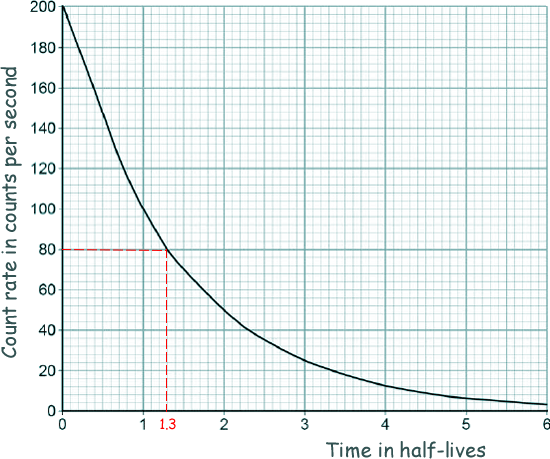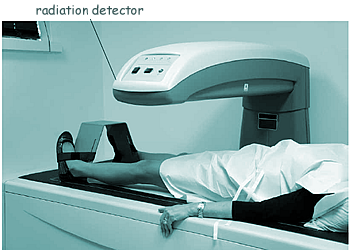GCSE Questions: Radioactivity Q12. Smoke alarms contain an alpha radiation source and a radiation detector. The diagram below shows part of the inside of a smoke alarm.
(a) The smoke alarm stays off while alpha radiation reaches the detector. Why does the alarm switch on when smoke particles enter the plastic casing? The smoke absorbs [1 mark] (b) Why is it safe to use a source of alpha radiation in a house? Alpha radiation is not very penetrating
Therefore smoke detectors should be treated with respect and kept away from small children (and idiots who might play practical jokes).... school alpha sources are ensased in metal with a very small opening for the alpha particles to get out and carefully handled with tweezers in school and NOT touched by hand. [1 mark] (c) The smoke alarm would not work with a radiation source that emits beta or gamma radiation. Explain why. Most of the beta and gamma radiation would penetrate smoke [2 marks] (d) The graph below shows how the count rate detected from the radiation source in the smoke alarm changes with time.
The smoke alarm switches on when the count rate falls to 80 counts per second. Explain why the radiation source inside the smoke alarm should have a long half-life. A long half-life means that the count rate remains at a constant value for a considerable time. If it had a very short half-life the count rate would decrease quickly, making it increasingly sensitive to dust and smoke particles until it reached 80 counts per second, when it would sound without there being any smoke - after 1.3 half lives the smoke alarm would continually ring.
[2 marks] (e) The photo shows a patient who has been injected with a radioactive source for medical diagnosis.
Explain the ideal properties of a radioactive source for use in medical diagnosis.
Points they want you to make in your answer:
[4 marks] [Total: 10 marks] |
Follow me...
|








